So i have two 3d line segments A and B the only givens are the origins of both line segments and their lenghts. I need to oriente the two line segments in a way that they end at the same position. EX:
point3d common_end_position;
bool result= intersect_line_segments(
{0, 0, 0}, // position_0
2.0, // length_0
{2, 0, 0}, // position_1
2.0, // length_1
{0, 0, 1}, // hint_direction
&common_end_position);
The funciton should return true with the common end postion being {1, 0, 1.7321} If they cannont be oriented so that they end at the same endpoint then the function would return false
